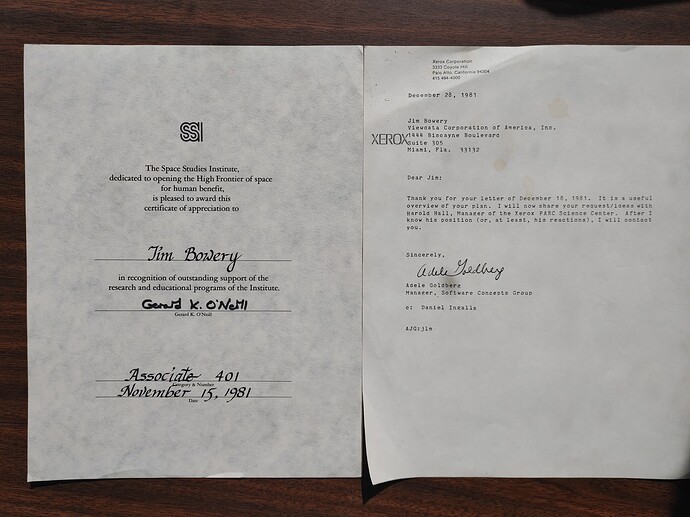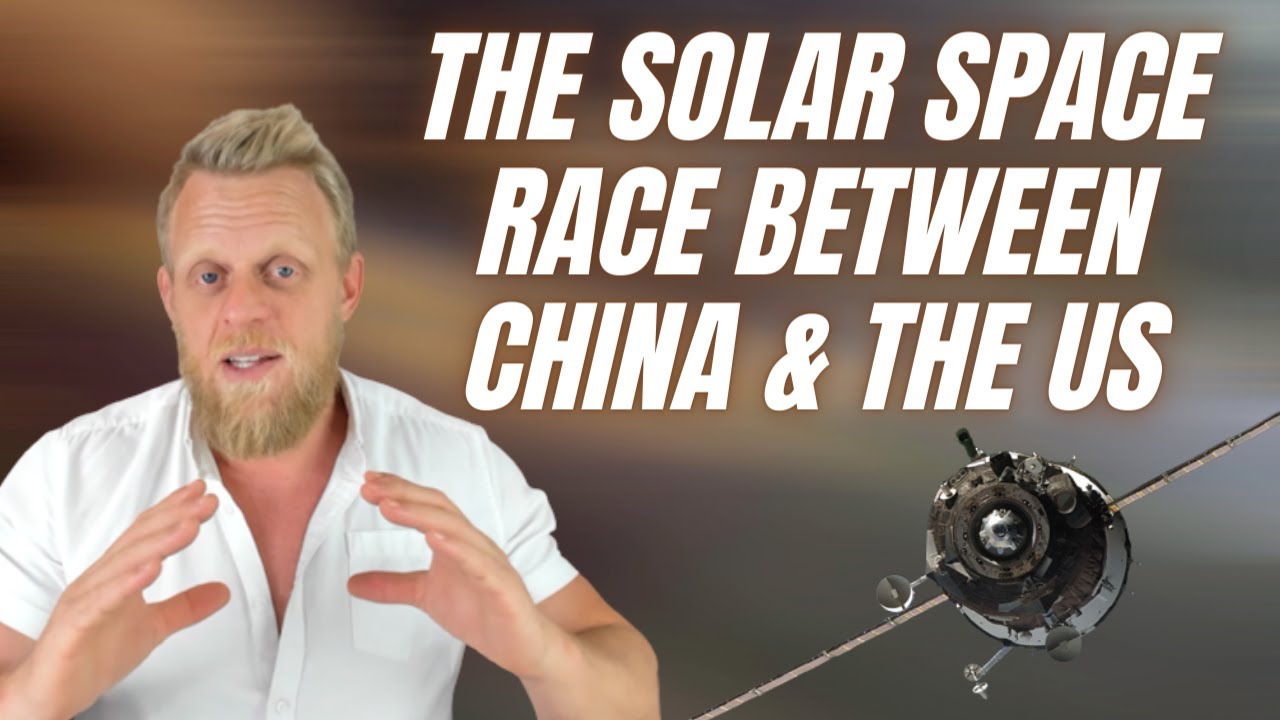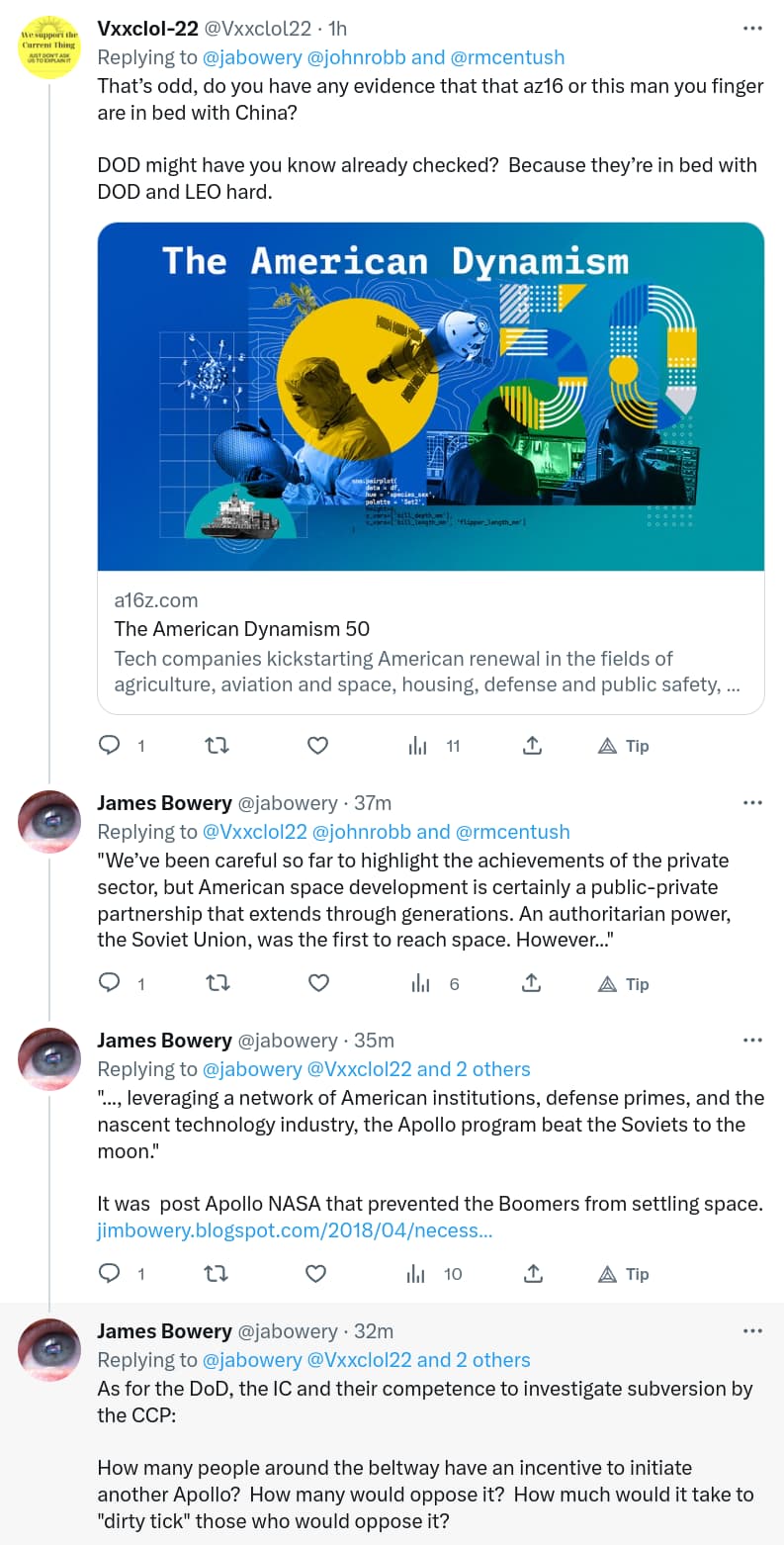Assuming this can be done technically, what becomes of the scores of TW’s of energy beamed to the Earth’s surface. Even if directly converted to electricity, energy is conseerved. Will this not eventually yield heat, i.e. global warming?
It eventually gets degraded to heat and represents an increment to the Earth’s energy budget or, more precisely, the solar component of energy input, since it is just the capture of solar energy which would otherwise miss the Earth. The main natural energy inputs are:
- Solar: 174,000 TW
- Geothermal: 44 TW
- Tidal: 3 TW
- Total: 174,047
Now, any form of energy produced by humans which does not come from the Sun (for example, fossil fuels or nuclear energy) adds to this total, as would additional solar energy captured and delivered by solar power satellites. If total human energy consumption is 18 TW, this represents around 0.01% of the natural energy input from the Sun. This would produce, by itself, a negligible increase in the Earth’s temperature and is around one tenth the variability in solar input over the 11 year solar activity cycle. The main human drivers of changes in the Earth’s temperature are not energy consumption by itself, but side-effects such as release of greenhouse gases from burning of fossil fuels and agricultural and industrial activities.
If produced from sources that do not create these other consequences, human energy production could probably increase by a factor of ten or more without harmfully warming the Earth. Energy production from solar power (directly by Earth-based photovoltaic panels or indirectly by means such as wind turbines or hydroelectric power) do not affect the energy balance, since that is solar energy which would have ended up heating the Earth one way or another anyway.
You need to consider the alternatives. Nuclear power for example dumps about 2/3rds as waste heat making the efficiency around 33%. Rectenna losses are around 15% so 85% of the power is useful.
The best fossil (combined cycle) is around 60%, but the long term CO2 heat-trapping is a problem.
“ended up heating the Earth one way or another anyway.”
Wind and hydro yes, but PV is blacker ground it covers. So even PV can add to the heat problem.
This is not the topic to discuss the hypothesis of Anthropogenic Global Warming – suffice it to say that anyone who looks into the claims begins to have serious doubts about its validity. Water vapor is also a Radiatively Active Gas (to give tne mis-named “greenhouse gases” their proper name) – and it is present in the atmosphere at concentrations orders of magnitude higher than carbon dioxide; liquid water also forms 2/3 of the surface of the planet, providing a huge area for continued evaporation. Anthropogenic CO2 is minor – and as King Hubbert pointed out, it will go away in a time frame that is geologically insignificant.
That is not to say there are no anthropogenic influences on climate. Agriculture may be a big one. There have even been claims that large scale use of wind turbines will alter wind patterns with consequent effects on climate. However, we need some humility about all these claims about human impacts on climate – variation in solar activity likely dwarves anything we could do, even if we tried.
There’s a good chance that Bezos will take advantage of the fact that Musk as space settler was neutralized by Zubrin and simply piggy-back on Musk’s superior engineering of space transportation and fill in the gaps of O’Neill’s approach, starting with LOX production using teleopresence. There are a variety of ways of getting mass to escape the moon’s shallow gravity well. The most obvious near-term one for a LOX business is to buy methane delivered at the lunar surface from SpaceX and use it to loft LOX to cis-lunar space. It seems Musk is seriously stuck on “the planetary surface being the right place for a technological civilization” so it may take him a while to wake up.
Of course, I am a bit biased since I was SSI’s local support team leader in Miami when Bezos gave his valedictorian speech. But I have been telling the Bezos-fans that Musk would beat Bezos on opening access to space since he started SpaceX.
Yes. I think O’Neill’s view makes far more sense; more long-term bang for the spacefaring buck, so to speak, and economically much more viable and sooner.
New Mexico push for geothermal:
https://www.abqjournal.com/2568570/theres-an-almost-unlimited-amount-of-clean-geothermal-energy-under-our-feet-new-tech-could-help-unleash-that-potential-in-new-mexico.html
https://www.abqjournal.com/2568575/sandia-national-laboratories-drilling-research-long-used-by-oil-and-gas-firms-is-being-put-to-use-for-clean-geothermal-energy-development.html
https://www.abqjournal.com/2568585/in-the-near-future-clean-geothermal-energy-could-heat-and-cool-the-entire-university-of-new-mexico-campus-and-other-institutions.html
Interestingly, industry has a lot of experience sending heat into the ground. That is the basis of thermal Enhanced Oil Recovery, widely used to extract heavy oils in California (once upon a time) and in Canada. Problem is that a well can be thought of as a rather inefficient heat exchanger. As the steam injected into a well travels down the well, it cools down. It is generally uneconomic to try to inject heat more than a few thousand feet into the earth.
That suggests geothermal energy will face the same general problem – the very hot liquid deep under ground will cool as it comes to the surface, and may have little useable energy left when it reaches the surface. Geothermal is a wonderful resource in geologically unusual circumstances, such as the Geysers (in California) and Iceland. Outside of those unusual places, geothermal is fairly limited. In a sense, geothermal energy is like hydroelectric power – great … if there happens to be a major river flowing by.
Quaise Energy, an MIT spin-off, is developing millimetre wave electromagnetic drilling technology to permit sinking boreholes to the 3 to 20 km level, fusing the rock walls of the bore as it goes, where temperature is around 500° C. Supercritical water at that temperature brought to the surface will drive conventional steam turbines, including those of repurposed thermal power stations. Here are two New Atlas articles about the technology and plans:
- “Fusion tech is set to unlock near-limitless ultra-deep geothermal energy”
- “Quaise’s ultra-deep geothermal drilling plans: Your questions answered”
(The “Fusion tech” in the first title is misleading. There is no nuclear fusion involved. They’re just using high power microwave technology developed as part of fusion reactor research to do the drilling.)
Here is a short promotional video about the technology.
This is a presentation the company made at the MIT Technology Review ClimateTech conference in November 2022.
The oil & gas industry and the geothermal industry have been investing in these kinds of ideas for many years. I recall seeing a laser drilling experiment about 20 years ago. Fancy drilling technology does not solve the problem of heat loss as the hot liquids are brought to the surface through thousands or tens of thousands of feet of cooler heat-absorbing rocks. A lot of work has been done on insulated tubing for steam injection into heavy oil reservoirs – but that is expensive.
What is the answer? Nuclear power!
IIRC Keith’s Skylon approach bootstrapped SPS with SPS power. Although that particular bootstrap relied on lasers and SPS typically relies on virtual masers (via microwave phased arrays), a similar boostrap strategy may be available by using microwave processing of lunar regolith as described in MICROWAVE PROCESSING OF LUNAR SOIL:
The unique properties of lunar regolith make for the extreme coupling of the soil to microwave radiation. Space weathering of lunar regolith has produced myriads of nanophase-sized Fe0 grains set within silicate glass, especially on the surfaces of grains, but also within the abundant agglutinitic glass of the soil. It is possible to melt lunar soil (i.e., 1200-1500o C) in minutes in a normal kitchen-type 2.45 GHz microwave, almost as fast as your tea-water is heated. No lunar simulants exist to study these microwave effects; in fact, previous studies of the effects of microwave radiation on lunar simulants, MLS-1 and JSC-1, have been misleading. Using real Apollo 17 soil has demonstrated the uniqueness of the interaction of microwave radiation with the soil. The applications that can be made of the microwave treatment of lunar soil for in-situ resource utilization (ISRU) on the Moon are unlimited.
However, this exponential “bootstrap” feedback cycle is in the production of the bulk microwave components of SPS in situ from lunar regolith by using the same bulk microwave components.
Lunar LOX would be a by product of this positive feedback cycle – and would comprise the vast majority of any reaction mass required to get from the lunar surface to GEO – but also from LEO to GEO as well as to the lunar surface. For example, methane rockets require 17 times more oxygen mass than methane. Moreover, the delta-v requirements going from the lunar surface to GEO (thereby bypassing LEO construction of SPS and the attendant risk of Kessler Syndrome that Keith identified) could be ameliorated in two ways, one near term and the other longer term:
Near term: Earth aerobraking using lunar-derived ablative shields.
Longer term: Cislunar (LEO ↔ GEO ↔ Lunar Orbit) momentum exchange (eg: centrifugal tethers) powered by lunar mass’s gravitational potential energy.
Eventually the momentum exchange system might also extend to the lunar surface at which point the cost of getting limiting components (likely a small fraction of the SPS system) to GEO would be reduced to the cost of getting them to LEO.
The limiting technology appears to be telepresence – mainly for lunar surface operations. The GEO telepresence problem appears solved by the fact that the control hysteresis from the ground is short enough that existing ML tech can provide a VR experience that simulates the physics of objects being manipulated by the human without introducing unacceptable loss of synchronization (or VR vertigo).
Good news from BlueOrigin: They’ve synthesized solar cells from lunar regolith simulant:
I wonder if they were using simulant that, like the simulants that fail to replicate actual lunar regolith’s ability to become molten under microwave heating, inaccurately reflect lunar regolith. If so, then the news is even better for BlueOrigin than they know!
This, plus BlueOrigin’s mass-efficient lunar lander puts them in a very good position bootstrap SSP using SpaceX’s low-cost to LEO SuperHeavy even if BlueOrigin’s LEO launchers underperform.
It’s getting to the point that someone really should update Keith’s models for Skylon to see if the 17 to one mass advantage of using lunar-derived LOX for methane engines is enough to overcome the environmental problems created by using SuperHeavy rather than boostrapping with SSP-powered Skylon. (I’m assuming the early stages of lofting fabricated parts from the moon’s surface to GEO would be handled by methane rockets like BlueOrigin’s – and later stages would in be handled by momentum exchange. Mass drivers? Cutler’s opinion was that they would shake themselves apart due to their own transients. “Like hitting each coil with a sledge hammer whenever a bucket passes through,” was his description.)
Thank You. The Ice Sheets on North America melted before a human existed! And though I hear it bandied about—I do not live in a greenhouse! ![]()
There have been some interesting proposals for in-situ propellant production on the Moon, which are summarised in the Lunarpedia page “In-Situ Propellant Production”. If the lunar base has access to abundant high energy (as from a nuclear reactor, solar power satellite as envisaged in Daniel Suarez’s Critical Mass, or a solar furnace operating during the lunar day), extraction of oxygen from lunar regolith is straightforward, as it is the most abundant element. The main problem is that other common components of propellants such as hydrogen and carbon are extremely scarce (except for water ice deposits only found in shadowed craters at at the lunar poles), and would not be accessible without massive mining and processing of regolith, perhaps as a by-product of mining for Helium-3 as a fusion fuel.
But there are a lot of things that will burn in oxygen, such as silicon and aluminium, which are the second and third most abundant elements in lunar soil. Theoretical I_{\rm sp} for both, burned as a fine powder with LOX, is around 285 seconds, and NASA has actually tested [PDF] a subscale aluminium/LOX engine that produced around 125 seconds. Sulphur makes up around 0.27% of some mare soils on the Moon, melts at 115° C, and also produces around 285 seconds with LOX.
None of these have the elegance of a solar-powered mass driver, but may be useful in bootstrapping export of lunar resources and for applications such as kick motors for payloads launched by a mass driver.
Back in the early space colony days, kick motors were not considered for lunar mass drivers. They used a catcher, which Tom Heppenheimer likened to being hit by a steady stream of 18th-century cannon balls. It was a very difficult business, required the invention of achromatic orbits, and the mass driver was restricted to one location on the moon. Modern fast semiconductors should make this easier, but no serious work has been done for decades.
Although Google doesn’t easily turn up any results, IIRC my ancient, if apocryphal, history, a silane rocket once went haywire and broadcast crystals around GEO resulting in a period of time when solar panels of communications satellites were losing cells.
Here is a link to the cited Andreessen Horowitz article, “Why America Must Develop Space, and How We’ll Do It”. The (funny-)money quote:
Space is far too important to simply cede development to others. Control of this new sea and development of the space industrial base are paramount toward the continued strength of the United States, and the prolonging of a world of free markets and liberal democracies.
Ummm…would that be the “continued strength” of the railroad-era, continental-scale, resource-extraction empire that is US$ 31.5 trillion in debt, spends more yearly servicing that debt (at a time of historically low interest rates) than the combined military spending of China, India, the United Kingdom, and Russia combined, and spent eleven years and more than US$ 55 billion (2022 dollars, SLS+Orion) developing a throwaway “Mega Moon Rocket” built of used Space Shuttle parts that costs US$ 2 billion a shot after writing off development cost?
Yep, that’s what’s needed—a “public-private partnership” to open up the solar system to human settlement!





